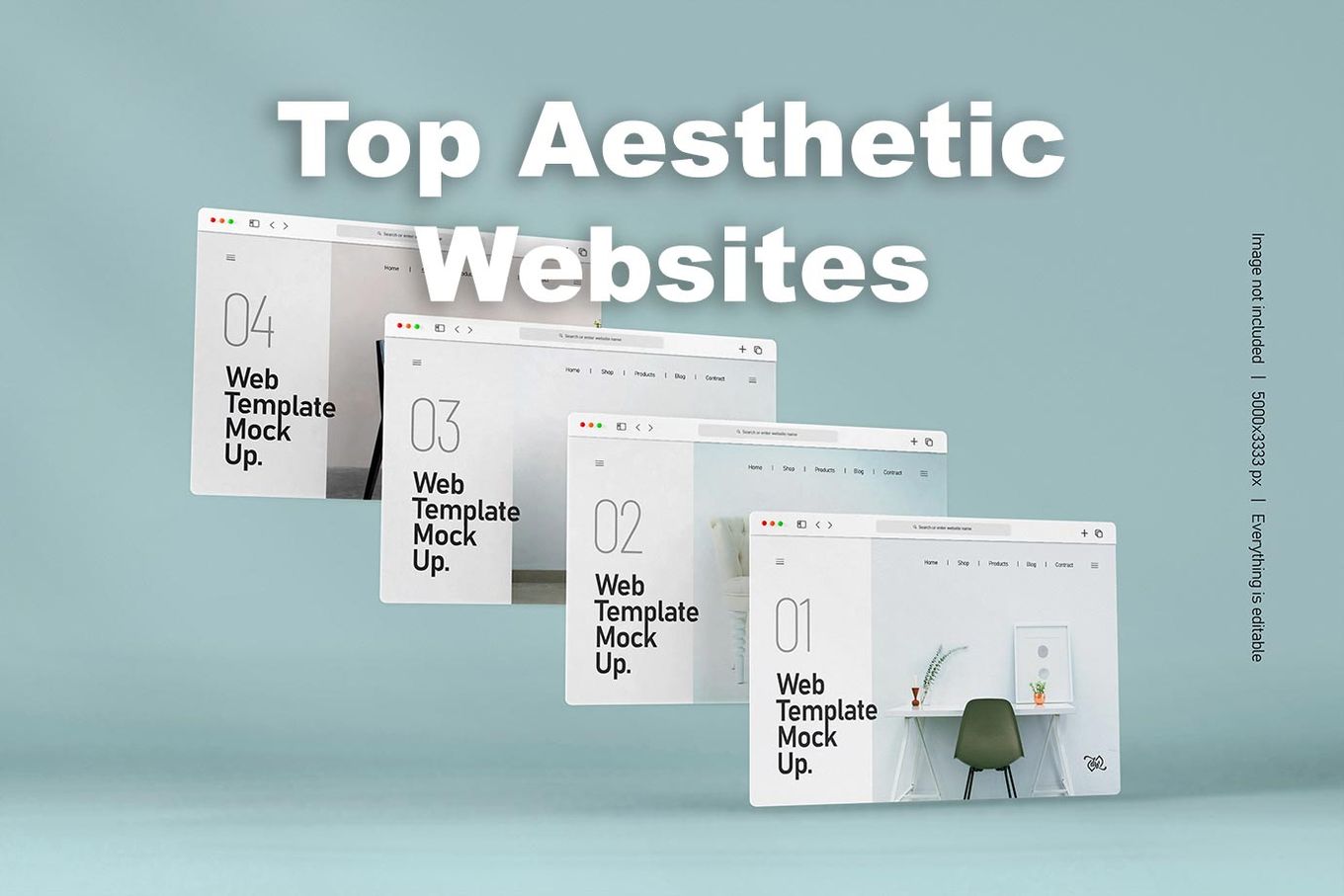In the digital age, where first impressions are often formed through online interactions, the visual appeal and user experience of a website hold immense significance. Aesthetic websites have emerged as a vital tool for individuals and businesses alike to leave a lasting impact on visitors. In this article, we’ll explore the art of designing aesthetic websites that engage, delight, and convert visitors into loyal users.
Table of Contents
- Introduction
- The Power of Aesthetic Websites
- Key Elements of Aesthetic Web Design
- 3.1 Typography and Font Choices
- 3.2 Imagery and Visual Content
- 3.3 Color Palette Harmony
- 3.4 White Space and Layout
- Responsive Design: Beauty Across Devices
- Navigational Fluidity: Enhancing User Experience
- Storytelling Through Design
- 6.1 Visual Hierarchy and Story Flow
- 6.2 Incorporating Brand Identity
- Aesthetic eCommerce Websites: Merging Beauty and Functionality
- Speed and Performance: The Hidden Aesthetic
- The Impact of Aesthetic Websites on SEO
- Measuring Success: Analytics and Iteration
- Balancing Aesthetics and Accessibility
- Future Trends in Aesthetic Web Design
- Mobile-First Aesthetics: Designing for On-the-Go Users
- Security and Aesthetics: Establishing Trust
- Conclusion
Introduction
In a sea of websites, standing out requires more than just information – it demands an aesthetic appeal that captures attention instantly. Aesthetic websites blend creativity, functionality, and user-centered design to craft a visually pleasing and emotionally resonant experience.
The Power of Aesthetic Websites
Aesthetic websites hold the power to create an immediate and lasting impact on visitors. Research indicates that users form opinions about a website’s credibility and trustworthiness within milliseconds of their first visit. This makes the aesthetics of a website a critical factor in engaging potential users.
Key Elements of Aesthetic Web Design
3.1 Typography and Font Choices
Typography plays a pivotal role in setting the tone of a website. A harmonious blend of fonts, complementing the overall design, enhances readability and aesthetics simultaneously.
3.2 Imagery and Visual Content
Compelling imagery can convey messages that words sometimes can’t. High-quality images, videos, and graphics create an emotional connection with visitors, elevating the overall aesthetic.
3.3 Color Palette Harmony
Colors evoke emotions and associations. A thoughtfully chosen color palette that aligns with the brand identity not only enhances aesthetics but also reinforces the brand image.
3.4 White Space and Layout
A clutter-free layout with strategically placed white space ensures that visitors can focus on the content. The arrangement of elements impacts the visual flow and aesthetics of the website.
Responsive Design: Beauty Across Devices
In a world where users access websites on various devices, responsive design is a non-negotiable aspect of aesthetics. Websites that adapt seamlessly to different screen sizes provide a consistent and visually pleasing experience.
Navigational Fluidity: Enhancing User Experience
Intuitive navigation is vital for user retention. Aesthetic websites incorporate easy-to-use navigation menus that enhance the overall user experience and encourage exploration.
Storytelling Through Design
6.1 Visual Hierarchy and Story Flow
Aesthetic websites tell a story through their design elements. Establishing a clear visual hierarchy guides visitors through the content in a way that’s engaging and narrative-driven.
6.2 Incorporating Brand Identity
Design elements should align with the brand’s identity and values. Consistent branding across the website fosters recognition and reinforces the brand’s aesthetic appeal.
Aesthetic eCommerce Websites: Merging Beauty and Functionality
Aesthetic considerations shouldn’t compromise functionality, especially for eCommerce sites. Striking the right balance between showcasing products and facilitating transactions is essential.
Speed and Performance: The Hidden Aesthetic
The aesthetics of a website also encompass its speed and performance. Slow-loading pages can deter users, regardless of how visually appealing the site is.
The Impact of Aesthetic Websites on SEO
Search engines value user experience. Aesthetically pleasing websites tend to have lower bounce rates and higher engagement, which positively influence search engine rankings.
Measuring Success: Analytics and Iteration
Analytics provide insights into a website’s performance. Aesthetic websites utilize data to make informed decisions, leading to continuous improvements in design and user experience.
Balancing Aesthetics and Accessibility
Aesthetic design should be inclusive. Prioritizing accessibility ensures that all users, regardless of disabilities, can enjoy the visual beauty of a website.
Future Trends in Aesthetic Web Design
As technology evolves, so do design trends. From AI-driven personalization to immersive experiences, the future of aesthetic web design is exciting and innovative.
Mobile-First Aesthetics: Designing for On-the-Go Users
With the majority of users accessing websites via mobile devices, designing for mobile-first aesthetics ensures that the visual appeal translates seamlessly to smaller screens.
Security and Aesthetics: Establishing Trust
A secure website is aesthetically pleasing to users concerned about their data’s safety. Incorporating security measures into the design fosters trust and credibility.
Conclusion
Aesthetic websites have redefined the digital landscape, turning it into an artistic canvas where design and technology intersect. Crafting a visually captivating digital presence is no longer a luxury – it’s a necessity. Embrace the power of aesthetics to create an online experience that not only draws visitors in but also keeps them coming back for more.




